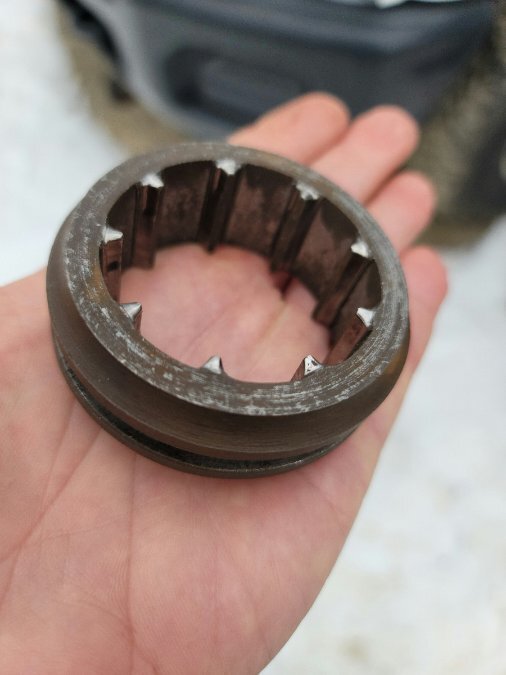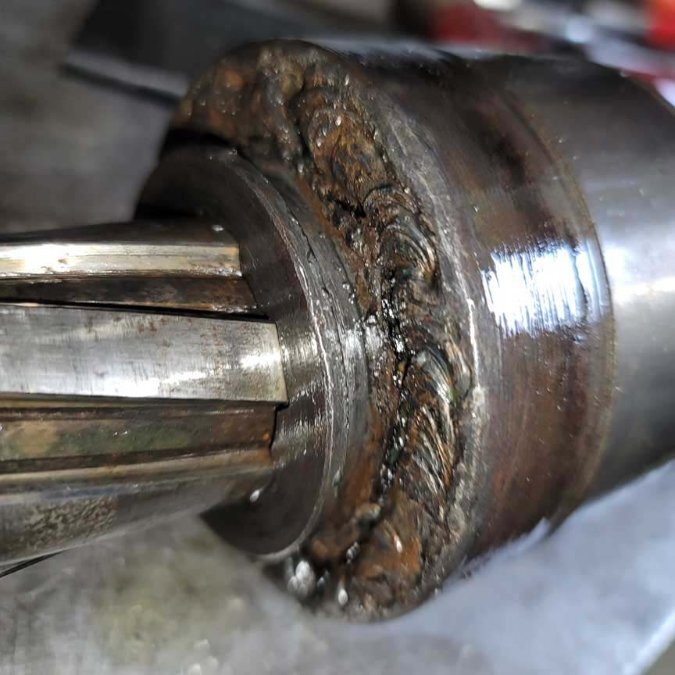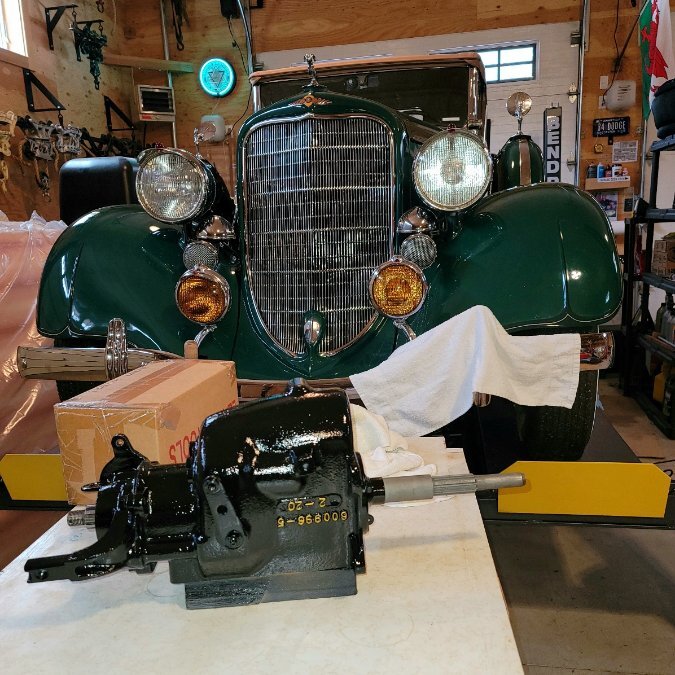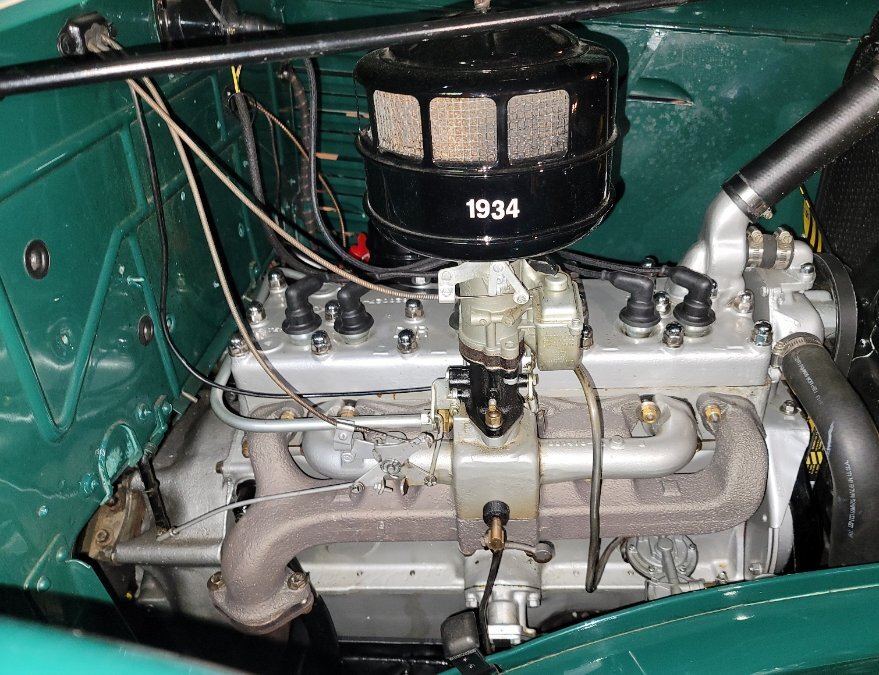-
Posts
197 -
Joined
-
Last visited
-
Days Won
8
Content Type
Links Directory
Profiles
Articles
Forums
Downloads
Store
Gallery
Blogs
Events
Everything posted by Semmerling
-
1. How does your light turn on, is there a switch onboard, is it an old mercury style movement hood style, will you need to run it to a switch? 2. Do you want it to be able to be turned on only when the key is on or anytime? 3. Does it have a cord and is moveable or is it a surface mount stationary light? 4. Is it fused? If this is a small draw light, forget all the electrical instruments, they are not needed. Just use common sense and do not tap into anything having to do with the engine....just the running gear. If you have access back into the interior behind the dash you can properly fuse it or switch it, etc. If the light grounds when mounted and you always want to be able to turn it on at any time, well....that is a one wire run. All of this can impact where you tap power.
-
Just take any steel standard plug and send it home. Grab a good quality neodymium magnet and slap it on the exterior top of the bolt. Will snap on there and wont come loose unless you scrape it off with force. No need to do anything else.
-
Here you go - $10 for the rest of your life.... https://www.amazon.com/uxcell-20Pcs-1-5mm-Copper-Washer/dp/B07M7BKSWV?pd_rd_w=2CgyW&content-id=amzn1.sym.c15e5526-d433-4ac0-a393-a3f3f7218fab&pf_rd_p=c15e5526-d433-4ac0-a393-a3f3f7218fab&pf_rd_r=J3X8NMZW12E4F2FPX3QA&pd_rd_wg=Kz09E&pd_rd_r=122ed0e5-cf64-4aea-95b2-69531c5e8362&pd_rd_i=B07M7BKSWV&psc=1&ref_=pd_bap_d_grid_rp_0_1_ec_t
-
YES, in Champion "E" "H" and "Y" and one would need a real reason to use them and would have to see if they would work. The most common use of extended plugs is obviously when the stock head is designed to use them and, after that, there are VERY few uses for them. Swapping to an extended plug does exactly nothing in regard to IGNITION if your engine was designed for a non-extended plug and, as you and Sniper alluded to, can be an expensive mistake. But there are some very specific instances when they are used and there is work done BEFORE their use to see if it is safe. Since I cannot think of any reason to run an extended plug in a flathead 6 running a normal single atmosphere and isn't using NOS, what follows if for later engines and their use. All of what follows takes for granted that one's air/fuel mix is excellent. One needs to know that extended tips have a unique characteristic, they run HOT at lower RPM driving and COOLER during aggressive driving. Hotter because the tips are farther from the cooling effects of their ceramic wrap and cooler because of the increase in high RPM incoming air/fuel. The target here is the higher RPM range when they are ever replacing a normal length plug. In other words....high RPM racing. All of that is AFTER one has tried to simply run cooler plugs than the stock plug and only if one's car still displays the driving symptoms that hot plugs can manifest in performance builds. What are some of those symptoms? Well, they all exist of the fine edge of tuning and there are a number like exhaust popping on deceleration and/or hesitation in accelerating on a quick stomp after cruising at a constant speed for a period of time. Before somebody says "running too rich" read the 1st sentence of this paragraph.
-
Sniper...it wasn't really in T1 - P4. But it was just a way of slipping in the felts as most don't replace them and they harden and wont carry lube to the upper shifting rail deck. Nor do they depress the spring loaded detents and lube them either. Its a crusade...a long lonely one....but, well, like an eternal sentinel....somebody has to do it..... Now, back to the action....the cache of vintage Canadian Lubrications....... PAdams...N, S, E, W...the where of it doesn't matter.....I get the call and its go time.
-
Thread 1, paragraph 4 "My transmission doesn't have synchromesh, but it does still have non-ferrous within" "a person does need to know what weight they need to slow things down, stay in the case, etc." "Replace both felts as the May 19th 1934 fire is still the 2nd biggest fire in Chicago's history and started in a Stock Yard transmission shop"
-
So......so......
-
Well stated, thanks for clearing that all up. Lets review.... By mentioning 140 weight and posting the 140 GL-4 label, one is talking about GL-5 and becomes clueless. We are no longer saying "That's your 1st clue" or "Thems the facts!" but rather "Enough said" as the admonition of choice. So its "the API that rates the oil" and, if I've go this right, "the industry supplies the correct oil as needed. " Now the harder part...everybody is free to read and interpret and use what they want, but "it is the posting of misinformation that more the manner I said what I did." Took me a while, but then...well lets just say wow! Ok, I'll give it a go.... I used 140 Gl-4 in my transmission because it has real good stuff in it. I might hope that the GL-5 ASTM D130 goes from 1B to 1A sometime in the future, but for now...enough said.
-
Nobody here said use "use GL-5" for the reasons that were stated more than once. There are no risks if one reads the labels and real advantages over vintage and earlier offerings. Young Ed, you care correct, the only offering from Valvoline that is non-ferrous safe is a single weight and one can do better.
-
Can the plug be found in the listing above? I don't see it.
-
Phillip can you post a clear picture of what you have and how you are setting up the battery? Step back, close up won't help at this point, the big picture is better
-
As long as at the end of all this people stop saying that Hypoid Lubes don't have in their spectrum the finest transmission oils that can be used in the transmission that use non-ferrous metals....well....its worth it. I use this and it provides a flawless shift throughout the whole range. The infamous slider ring 1st to 2nd "Kathunk" is nowhere to be found and the reverse dig is S M O O T H. Most people do not know that the 1934 transmission had one of the most impactful slider select designs. It was so bad it makes the speedo gear look robust. It consisted of a astonishingly low spline count that was spread way too far apart. It tops the list of the "Scarce 7" for that transmission. That, along with being non-synchro, made it a very heavy wear part. The number of splines went up tremendously right after 1934 as a result. For those that know their transmissions, look at this compared to your 1-2 slider. Unbelievable right? Lubrication for this piece alone matters. Because of the count and the gap, IMPACT lubrication is everything. You do not get the equivalent with minerals oils. If you know what you are looking at, if you want a seamless transition, this slider is already shot. The spline width is less than 70% and worn in a spiral, the lead ins are already worn.If you want 2nd to go in or, perhaps more importantly, stay in during engine breaking on a steep incline, you aren't getting that back. Yes, you can file the lead ins (clunk) but that isn't going top solve the pop out under breaking load. Now most people would still use this, old hands might just turn it around (not if the spline is arched.) People....stop fooling around and use the best lubs you can buy. Here is the write up. It is the exact same text on all the weights. You can do just as well with all the other extremely advanced and perfectly superb MODERN hypoids with one of the 3 buffers. Go online and simply look up the weight you need and read the spec sheet for any MODERN lubricant. "GL-4 Hypoid Gear Oil has low pour points and high temp properties to provide lubrication over a wide temperature range. This versatile lubricant contains anti-rust and anti-wear EP additives to provide the corrosion protection in drives and hypoid gears. It is not corrosive to copper, bronze, or other non-ferrous alloy bearings and bushings" Now D... First, read what I originally wrote about GL-5 for now.....and the exceptions I mentioned. You didn't have to tell me the weight you used. its obvious, because if you did use the right weight you would not have had a single issue if your GL-5 was buffered. Nothing presents immediately other than weight. The deterioration that used to....in the past....a long time ago.....that had to do with non-ferrous metals, took a long time to even appear on the those parts that could be seen with a basic disassembly. Bushings were more complicated as they could only be inspected with the full monty. Oil sample....if somebody placated you by giving you samples what would you do with them? You don't look at the samples, you look at the effected parts....You don't have the equipment, the variety of platforms, the staff, etc. etc. etc. Trying to help you here, you think reading takes time...try writing this out. https://pqia.org/engine-oil-lubricant-astm-tests/#:~:text=Engine Oil Lubricant ASTM Tests ,Elemental Anal ... 28 more rows https://www.astm.org/mnl62-eb.html
-
Late 1960 small engine plug. No known cross, no specific application. Thats all I could get.
-
The Twin Fires were sold as producing higher mileage.
-
Ok so the very best resource was a Gentleman named Cornelius Bergbower. He published the 3 volume set called "Spark Plug Collector's Guide" He died a number of years ago, but his wife is as nice and as competent a resource as he was. I will email her and ask her.... 1. What the Wizard Twin Fire #22 (L1084-33) was for originally and if there is a cross as well you can use to double check. I am on it., hang on.....
-
This argument isn't based on faith. Its not about GL-5 specifically.It's not an argument at all. It's a dialogue refuting the idea that advancements made over the last 70 years have not accounted for all the impactful properties and for all the very same metals and materials that were used early transmissions forward to today. The dialogue is to remind the people who simply cannot keep up with lubrication sciences that the decision not to use more modern products no longer have any bearing that they are harmful for non-ferrous metals. If someone wants to come forward with an argument that suggests that one should not use the very best they can find to prolong the performance and useful life of their transmission, they are certainly free to do so.
-
Sniper, i must have missed your thread on it, spologies , then we agree. D35, first off, the way the analysis is done is not by being shown oil samples.Secondly, if you found this long winded opinin and hot air you don't stand a chance getting through either the analysis process or the final ranking process and resulting descriptors. The only opinion I might have offered up is its time to stop listening to people that either can't or won't read the spec sheets. PS GL'5 isnt an oil weight. If you picked the right buffered GL5 in the wrong weight than your issue has exactly zero to do with it being gl-5 and everything to do with picking the wrong weight. Swapping it out for the right weight in mineral oil got you the right weight and a whole lot less long term protection as you are missing the last 70 years of improvements. In 10 years your tranny's wear will look like what it would in the 1940s minus the added sawdust.
-
If a lubrication engineer could travel back to the 30s and sat down with the lubrication engineers from Dodge back when, the 30s engineers would feel miserable about having to use their lubrications of their day. In short , the advancements made in lubrications place today's lubricants in a category of performance that is astonishing compared to the lubrications of the 30s. I was going to write in Stever's thread "Transmission oil after rebuild" and address the often heard thought that goes something like this "Modern hypoid trans lubes have additives that don't play nice with brass, bronze, and other "white metals". After staring at the screen, I came to the conclusion that addressing that statement would best be done in its own thread. That way I would not distract from SteveR's peaceable kingdom. My '34 transmission received a complete rebuild this winter after 2 1/2 years of parts collection. I, like Steve had to choose an oil to put in it. I didn't struggle too terribly much with the issue. My transmission doesn't have synchromesh, but it does still have non-ferrous within. I am not driving in the winter as the salt up here requires a spring of rain to wash away. I am not advocating that a person fill their case with straight 140, but a person does need to know what weight they need to slow things down, stay in the case, etc. I use a 140 hypoid and love it. One does a changeout so infrequently that if you are shopping for value, THE VALUE is in the quality of the lube not how little you paid for it or how closely you stayed within the requirements of a 90 year old FSM. Buy a great modern buffered hypoid and you will get many many more miles than the original lube from the factory gave your great grandfather. The idea that hypoids cut the useful life of a transmission with non-ferrous in half is, is...like listening to someone warn us about nuclear reactor designs while musing about BolshoMoshchnosty Kanalny. Its ancient history folks....it just isn't the case (no pun intended). No, hypoid oils do not all....repeat, all...effect the non-ferrous metals found in some manual transmission. That problem...the sulfur problem...has now been attended to in no less than three 3 completely different approaches and the issue of the protective deposited layer laid down on non-ferrous and is no longer a "thing" and hasn't been for a looooong time. Stay with GL-4 for now, though there are GL-5 offerings that unquestionable do not raise any concerns. Here, the maritime industry deals with the very issues we are talking about by knowing there literally is no issue. Though they do change out their manual transmission lubricants more religiously. Now we are not talking about the differential or rear axle as that is a slightly more complicated one. GL-4 provides a slightly less extreme pressure protection, some use something else. READ what the manufacturer/provider says in regard to non-ferrous materials. If it says something like.... "GL-4 Hypoid Gear Oil has high temp properties to provide lubrication over a wide temperature range. This versatile lubricant contains anti-rust and anti-wear EP additives to provide the corrosion protection in drives and hypoid gears. It is not corrosive to copper, bronze, or other non-ferrous alloy bearings and bushings" material engineers, mechanics, chemists, accountants and yes liability lawyers all have signed off on them. NAPA sells mineral oils to the very same people they sell wax base water pump lube to, yes there are modern non wax based lubes that do not group/collect/bind....the fire engine industry drove that solution.
-
First off, thanks you Sniper for all the time you take, I enjoyed the very much the updated CHAMPION nomenclature chart. This last week I had to reach out to Champion again after a trip to the top 3 Auto Parts stores in my area yielded nothing. In this case "nothing" means that Champion plugs were listed in their book, but they had no inventory nor could they special order. I was searching for plugs for projects that more current is a year 2000. A couple of observations... 1. The Champion "direct" phone line is not Champion, but rather a business that services Champion clients on their behalf. They are only reasonably informed and generally look up in their data what they "have" and what is "available." In the world of flathead 6, we still can get 12's though the price is going up. 11's are and I am left with the thought that 11's are about right. On a scale of 1 to 10, with 10 being great, they get a 10 and looking up stuff and a 1 for knowing any depth or breadth of the line. Its is about the same for Autolite and Bosche. As we both know, and the industry is very much aware of and does not plan to fix, the suggested crosses in regard to heat ranges between providers are a joke. One has to grow comfortable with one or two providers and work their way through the plugs. There are fewer plugs....poor crosses....and less of what they do make have. Favorite EBAY listing? The ones that read like this "Champion spark plug RJ12YC #14 - replaces OJ11Y - RJ10Y- RJ11Y - RJ87P - XJ10Y." Nuff said. 2. The richness of the Champion line is pretty much over. Now, in the case of these old plugs, I am still not sure any of this really matters that much. I am running 11's and they do just fine (I still can't imagine 8's) but whereas one could come much closer with a heat range choice, that is pretty much a start hotter and see what works kind of event. 3. As an example, on the 2000, that is a high compression supercharged V10 that I built 23 years ago. I kept copious notes on the plug ranges in use from heavy racing and more general mix street driving. The plugs made a huge difference and I would swap them out as needed. Of the three really important COOLER plugs and the two most important HOTTER plugs, Champion only can supply two out of all of them now, and neither of them are really "specialty. " The part stores may list them, but they don't really sell them. At one point Campion gave me a name of a plug resource I could call (nice of them) but that turned out to be a guy who basically was a collector. He said ,whereas he knew exactly what I was looking for, he had 3 or 4 plugs of a couple of them. We had a long talk and he ended by sighing and saying "in 10 years kids will be swapping out electric motors and these plugs like them cars in them will be their rear view mirror...and the plug companies know it." Boom.... Ken, I find that cooler plugs are a final fine tune for higher compression, even with a single atmosphere. These early cars without fuel injection are even less forgiving, one ends up targeting acceleration and just lives with deceleration popping or pinging when you are in the target performance range of the hotter plugs. I use 11's from Champion and they do a reasonable job. I also have Autolite that do the job. In more modern designs the extended tip places it in a hotter range where they clean themselves nicely. We don't have that option. Note that platinum tips are used because they can go the distance, but they they are by their very material poor conductors. Even though they last a long time, it is a performance step down. Iridium is better than platinum ( and palladium) but all three pale compared to copper. Copper make the best spark but they need to be changed out most often. Since most of us dont drive much, none of this matters. 6 plugs...old motor designs....pay the bucks to find the right heat range and get what works. I'll let this topic go....
-
I think there are a couple things going on. First is the champion has cut down their full production line enormously. The early plugs aren't the only thing that aren't being manufactured anymore. I tried to Source a specialty Champion plug for a 2000 production Dodge, Champion isn't making it anymore. Dodge realizes that and recommends a plug now it is neither long enough nor cool enough to really run as well as the original Champion spec. You can find the j11s and 12s if you really work hard at it for the early Dodge. I'm running the 11s because the 12s are a ridiculously expensive. I don't see how 8s are going to work.
-
6T, I agree with you in all regard. 7 years later a great deal had changed and you are enjoying some major advancements. The overdrive orbitals are far superior to the original FW assembly. You can get into OD and out of OD just as you point out. The only point that I was trying to make was once one makes the decision to shut a function down one is most apt not to recognize the deterioration that very same system goes through over, in my case, 88 years. Finding the FW tranny internals was supposed to be close to impossible, in the process of finding it I never came across any of the service pieces for the larger diaphragm system. It was pretty much a one way ticket. The friends I know with '34s do not even use the "600996-5 2-20" transmission and have all opted for a tranny with OD. Can't say as I blame them, no sync is a two extra steps to the right and a toe tap before the pirouette.
-
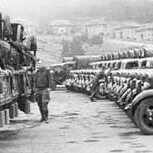
"One of these things is not like the others..."
Semmerling replied to Bob Riding's topic in P15-D24 Forum
Yes that is correct. This is a job that requires particular equipment I just don't have. The end result is well worth it. And the vast majority of locations have a good radiator shop. I also have kept away from fully aluminum radiators and much prefer the old copper ones -
This winter I set about to completely rebuild the "600996-5 2-20" transmission in my '34 DR. This occurred after 2 1/2 years of tracking down every part inside that transmission. These transmissions, with their free wheeling feature are a tough to rebuild as right here is where Dodge sends out the door the last of the non synchromesh transmissions. Why would anybody not move to a synchromesh? Answer "They Wouldn't" with perhaps the "I don't buy the 1st year of a new contraption" being a strong reason not to...at first. Synchro was coming and it would make non-synched transmissions the "steam engines" of the "diesel electric" age. Parts for the non-sychs would literally disappear of the shelves in the following 5 years as those that ground gears grabbed them up to make a go of the last hurrah. This thread is about vacuum leak from the free wheeling (FW) actuator system that sits right in front of the driver's side of the firewall. It is this device that actuates the FW linkage that results in the ability of the centrifugal clutch assembly, found in the final quadrant of the transmission to free wheel, to work. So, what is this all about? Well, the FW system was not going to last very long. The issue was safety, specifically the technique, or lack of technique, that made sure that the driver never needed to "engine brake." In FW and on a Rocky Mountain road trip? Well, when you take your foot off of the accelerator, there is exactly ZERO engine braking and it take the great skill of readers yet to address this thread to get back in gear. Your period brakes will last about as long as it takes to read this paragraph and then....well then....you were really flying. Accidents happened, people were maimed or worse. Some States contemplated a mandatory ban on FW, requiring the device to be shut off permanently in order for the FW models to be registered. Many people (not including those who, to this very day, step forward to say "all any damn fool needs to do is throw the knob back to the forward position, double clutch with an especially high rev and throw it into 3rd regardless of noise to be heard" all while watching electric polls go by like picket fences and being unable to read "Curve Ahead...Slow Down...Bye Now...Electra Shave." They are of course right, but in a very Darwinian way, they either attended enough funerals or are, as Ed would remind us, Captain Lance Murdock devotees. Many permanently shut the system down. And that is where any value to be found reading this thread begins..... Inside these FW transmissions is a final device that has an integral (as in, its a factory proprietary ASSEMBLY) FW centrifugal clutch assembly. The bearing for this assembly is the frame cage the clutch! One replaces this unit as rebuilding it may be possible, but highly unlikely and the only person that I could find that said they had done it only gets 1/2 an hour a day to use a phone. That assembly has a slider ring that moves it in and out of operation be means of a internal side mounted linkage (passenger side) that goes through the transmission wall and connects to the two distinctive articulated arms that are actuated by the fore mentioned diaphragm vacuum mechanism on the firewall. The means to set the FW system permanently off is to remove the the bar between those side mounted arms (on the tranny) and bind them forever static by bridging those arms. One does this so that the FW device in the tranny is in the forward position. Do that, and most did, and FW was ended. What I found in my tranny is that.....get ready for it.....the FW assembly was welded to the bearing. That made sure the assembly could not move to the activated position. It would have worked perfectly.....but.....the person that did the work (early welding) did not weld the unit in true center to the shaft. Yikes..... No leaving this behind.....no avoiding replacing the whole proprietary assembly.....no problem as I had found one. With that work done, I shut the system down by a static bridge between the two actuator arms. No FW. The new transmission was complete and had less miles on it the factory dealer delivered cars...as in zero driven miles. It runs magnificently. But....we are not done..... If one is of the mind that you have a FW device and that you can properly shut it off and just enjoy a great ride, well, in my case the story has one more twist. The FW device uses vacuum of the intake manifold itself, as in, not off of the carb. The size of the vacuum tube itself is huge, so large that the standard 3/8 intake hole is bridged to a 3/4" female and then the FW vacuum line is set into it. So large that a wholly separate vacuum line has to be tapped at the rear of the carb for the windshield wipers. The point here is that when I determined that I would test to see if that shut-down vacuum line was truly dead....it wasn't. The intake was sucking small amount of air randomly (like an 8th term politician,)through the whole FW diaphragm device. And, when I took off the FW vacuum tube, backed out the 3/4" female, set in a new 3/8" to rubber hose barb piece, well....good things started to happen. First, my vacuum gauge jumped 12 units, requiring me to significantly re-adjust the fuel mix, re-adjust idle, etc. After the stunning 45 minute drive in a long while I pulled the plugs and they were spotless, something that they have not been and has bothered me for some time. Moral of the Story - If you are not going to use your FW device, close the vacuum port on the intake. Final notes - from the factory, the thin vacuum line for the windshield wipers is a tap at the lowest rear of the intake behind the carb. Know that that flared vacuum line end, held into the intake by a flare nut, has no internal face for the flare to butt into. Any air leak is going to be small....but as this whole read is about the importance of vacuum leaks of FW models. Find a small FAT O-ring and get it over the flare/nut and on the line. When you set the nut in, pull the line out if it moves at all, Slide the O-ring tight to the nut and tape the line behind the O-ring. Now thats a vacuum line for a '34... Small black line is the wiper line....




